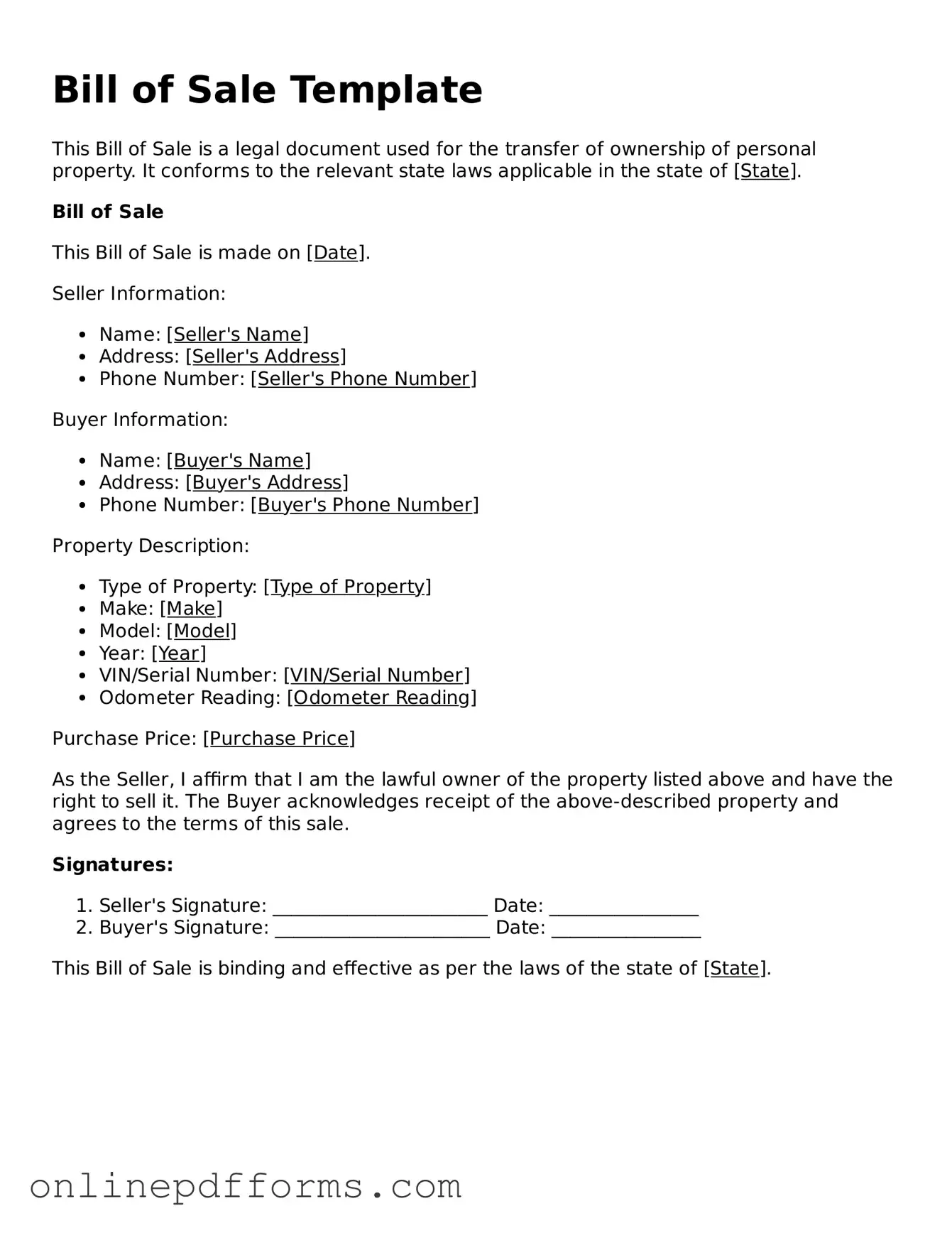A Bill of Sale is often compared to a Purchase Agreement, which outlines the terms of a sale between a buyer and a seller. While a Bill of Sale serves as a proof of transfer of ownership, a Purchase Agreement details the specifics of the transaction, including the price, payment method, and any conditions that must be met before the sale is finalized. Both documents are essential for ensuring that both parties understand their rights and obligations, but the Purchase Agreement typically precedes the Bill of Sale in the transaction process.
Another document similar to a Bill of Sale is a Title Transfer. This document is particularly relevant in the sale of vehicles or real estate. A Title Transfer formally changes the ownership of the property or vehicle from the seller to the buyer. While a Bill of Sale acts as a receipt for the transaction, the Title Transfer is often required by state law to officially register the new owner. Both documents work together to ensure that ownership is legally recognized and documented.
A Lease Agreement also shares similarities with a Bill of Sale, albeit in a different context. A Lease Agreement outlines the terms under which one party can use property owned by another party for a specified period. While a Bill of Sale transfers ownership outright, a Lease Agreement grants temporary possession without transferring ownership. Both documents are crucial for clarifying the rights of the parties involved, ensuring that expectations are met during the duration of the arrangement.
In the realm of personal property, a Receipt can also be compared to a Bill of Sale. A Receipt serves as proof of payment and can indicate that a transaction has occurred. However, it does not necessarily transfer ownership like a Bill of Sale does. Both documents serve as evidence of a transaction, but the Bill of Sale provides more comprehensive details about the item sold and the terms of the sale, making it a more formal acknowledgment of ownership transfer.
A Warranty Deed is another document that can be likened to a Bill of Sale, particularly in real estate transactions. A Warranty Deed guarantees that the seller has the right to sell the property and that the property is free from any claims or liens. While a Bill of Sale confirms the sale of personal property, a Warranty Deed assures the buyer of the legitimacy of the property’s title. Both documents protect the buyer’s interests, ensuring that they receive what they are entitled to in the transaction.
Lastly, a Donation Agreement bears similarities to a Bill of Sale, especially when property is transferred without monetary exchange. A Donation Agreement outlines the terms under which one party gives property to another as a gift. While a Bill of Sale typically involves a sale and payment, both documents serve to formalize the transfer of ownership. They provide a record of the transaction, which can be important for both parties for legal and tax purposes.
